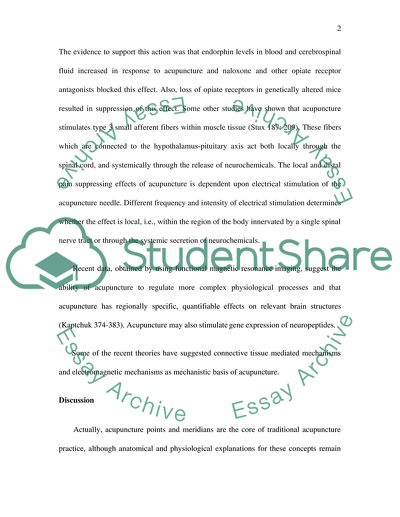Cite this document
(Mechanistic Basis of Acupuncture Article Example | Topics and Well Written Essays - 1500 words, n.d.)
Mechanistic Basis of Acupuncture Article Example | Topics and Well Written Essays - 1500 words. Retrieved from https://studentshare.org/health-sciences-medicine/1708579-mechanistic-basis-of-acupuncture
Mechanistic Basis of Acupuncture Article Example | Topics and Well Written Essays - 1500 words. Retrieved from https://studentshare.org/health-sciences-medicine/1708579-mechanistic-basis-of-acupuncture
(Mechanistic Basis of Acupuncture Article Example | Topics and Well Written Essays - 1500 Words)
Mechanistic Basis of Acupuncture Article Example | Topics and Well Written Essays - 1500 Words. https://studentshare.org/health-sciences-medicine/1708579-mechanistic-basis-of-acupuncture.
Mechanistic Basis of Acupuncture Article Example | Topics and Well Written Essays - 1500 Words. https://studentshare.org/health-sciences-medicine/1708579-mechanistic-basis-of-acupuncture.
“Mechanistic Basis of Acupuncture Article Example | Topics and Well Written Essays - 1500 Words”, n.d. https://studentshare.org/health-sciences-medicine/1708579-mechanistic-basis-of-acupuncture.


